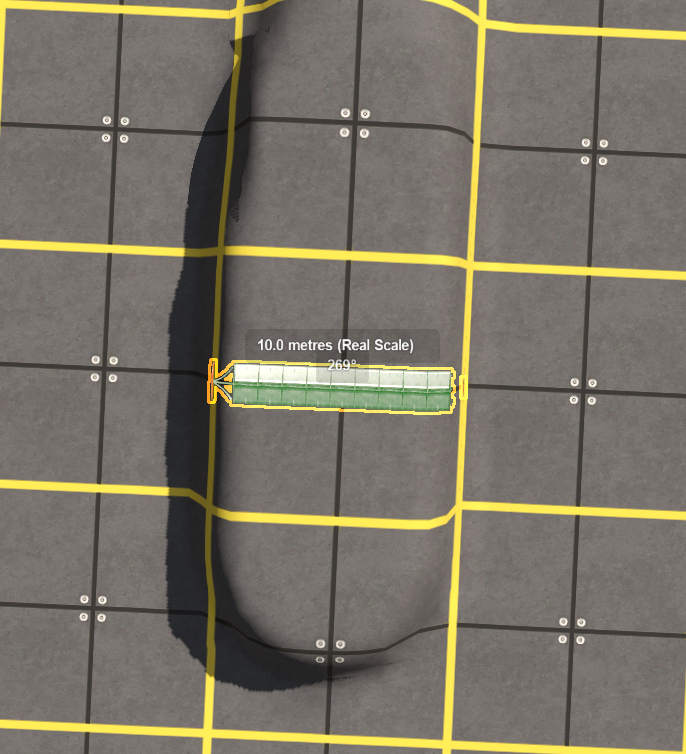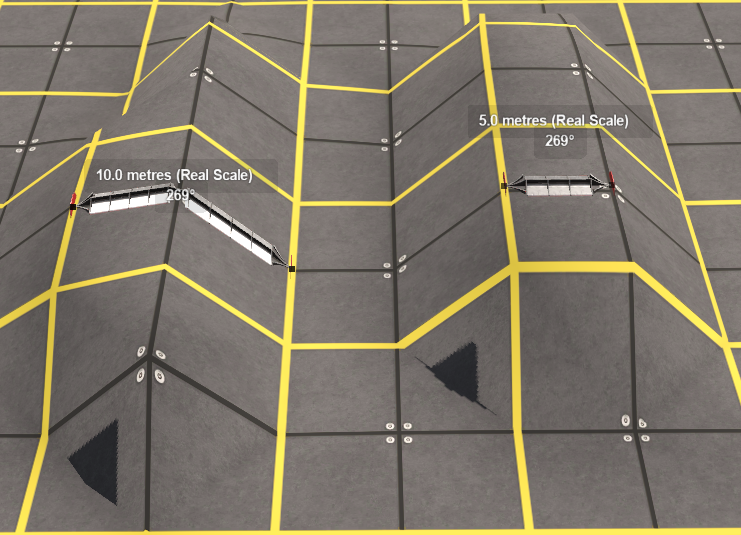AdvancedApproach
Well-known member
How is it I have the fill at 5m length and one one side it fills exactly to where the border ends but on the other side it extends an additional 5m out? Yes I have the baseboards at 5m fill increments.
Follow along with the video below to see how to install our site as a web app on your home screen.
Note: This feature may not be available in some browsers.

From memory that has always been the case with Surveyor Classic back to the earliest versions of Trainz.How is it I have the fill at 5m length and one one side it fills exactly to where the border ends but on the other side it extends an additional 5m out? Yes I have the baseboards at 5m fill increments.
That wasn't the case in TANE. I never had that kind of problem.From memory that has always been the case with Surveyor Classic back to the earliest versions of Trainz.
In Surveyor 2.0 you can draw out a Marquee Area and fill it exactly with the selected texture up to the Marquee Selection Area boundaries (with some fading towards the edges). So it is not an issue in Surveyor 2.0
It's like that with any texture for me. Not to mention the copy and paste in the tools section only allows 10m increments even on baseboards with 5m ground grid resolution.Try a different texture. The PBR textures act differently than the old flat textures.
In my experiments, the 5m grid resolution only applies to the ground terrain (elevations) and not to ground textures....even on baseboards with 5m ground grid resolution.
Even the ground terrain elevations are subject to this peril for me.In my experiments, the 5m grid resolution only applies to the ground terrain (elevations) and not to ground textures.
I just tested the 5m grid and had no problems raising/lowering terrain with a radius of 5m.Even the ground terrain elevations are subject to this peril for me.
I'm not having the same luck.I just tested the 5m grid and had no problems raising/lowering terrain with a radius of 5m.
I created a new route, used the Marquee Tool to convert the baseboard to 5m Grid, selected the Brush tool with the Ground Height target and Height Up action. Then I set the brush radius to 5m and started terraforming.
New 10m grid baseboard. Brush radius set to 5m, Height set to 5m, Brush Action set to Set Height.Case in point:


That's not an issue. The original non-PBR baseboards become PBR when an older route is imported. The issue could very well be that the textures are now rendered with dithering to soften the edges and make blending easier. This is definitely more helpful when ballasting track when the track runs at angles and other places so that grass, for example, doesn't suddenly become gravel.The problem is I imported these from T:ANE. Which means they were pre-PBR era baseboards. I must say that very well could be the cause of my troubles.
You're missing the point. I want the the textures to be filled in at the same increments. One side shouldn't be filling at a 5m interval while the other side is 10m. Watch the YouTube video again. You'll see what I'm talking about. The grey lines are the 5m marks. The thick yellow lines represent 10m. On one side the texture fills within the selected area. On the other side it extends an additional 5m. When building N/S the textures do not fill in E/W the same. The overflow is apparent there. You'll see what I'm talking about. Just re-watch the video. As for the sharp edges, I'm not concerned about that at all. The grass actually overlaps so that's not a problem.That's not an issue. The original non-PBR baseboards become PBR when an older route is imported. The issue could very well be that the textures are now rendered with dithering to soften the edges and make blending easier. This is definitely more helpful when ballasting track when the track runs at angles and other places so that grass, for example, doesn't suddenly become gravel.
While I understand that you want the sharp edge and separation between the ballast and the grass edge. In real life, it really isn't like that. Nothing is perfect in our imperfect world. It may appear neat and clean but if you were to get up close, you'd see the crab grass and weeds working their way into the ballast and some ballast being kicked off the roadbed and on to the grass.
The only way to avoid making this appear obvious is to cover the edges with debris, plants and bushes just like in real life. It's places such as this where the old grass splines and static grass clumps work to hide the imperfections in our world.
